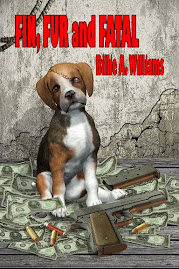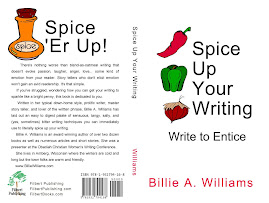
The Goal of your Story’s opening is to successfully introduce the story worth-telling problem and to hook the readers. It is essential to establish the rules of they story as each genre has its own rules that govern reader expectations. You must also foreshadow or forecast the end of the story at the very beginning. These are the essential components of an opening scene that should help you off to a hook-worthy beginning.
[NOTE: Not all of these elements must be present in the opening scene, however the first four are the foundations you will build on and are therefore crucial. ]
1. Inciting Incident – When the fabric of society as the protagonist knows it, has a hole ripped in it creating
2. The story-worth-telling – the problem, conflict, or crisis, which must be solved or resolved by the end of the story.
3. Initial surface problem – The immediate spurn to action caused by the inciting incident. The protagonist will solve, but not the real underlying story goal. Think of it as a mini-goal aiming toward the Story Goal. It also can create other problems. It may arise from the initial problem, but must have a deep rooted connection to the story-worth-telling problem of number two.
4. The Setup – You should strive to only give the reader what is exactly, absolutely necessary to understand this opening scene. (Little or no backstory). Save details for later when you will work them into the story whole a little at a time. What you need is a hint of the trouble to come, directly or indirectly.
These lesser components may or may not be necessary to adequately introduce your story. Use them, or leave them out whatever best suits your story and its purpose.
5. Back Story – The kiss of death to your manuscript? If you include too much unnecessary links to the past – yes it will be. Trust, instead that the reader’s ability to ‘get it’ will help them know what they need to know. Remember to include only that which is absolutely and exactly necessary. Some will assuredly fit better into the latter part of the story.
6. The Opening Line: This should be the best, strongest, most charged sentence of your entire manuscript!
7. Language – Remember the rule of thumb…each additional adjective or adverb halves the power of the verb or noun you use. Rarely, if ever do they double the affect. Strong, original verbs and concrete nouns create powerful writing. That includes dialogue tags, use said if you need to use a dialogue tag. Generally, language and action will do the tagging for you. Follow the rule of FAD – Feeling, Action, dialogue and you will stay on target without using unnecessary dialogue tags.
8. Character Introductions – Usually, protagonist and antagonist reaction/action form inciting incident creates a vision of these characters and indicates their personality. Brevity—is key here— pick telling details, not necessarily physical description but something that lends itself in interpretation to knowing your character by his/her actions. A caveat here is—do not introduce too many characters at once. It confuses the reader and makes the characters harder to remember.
9. Setting – Glimpse of detail, depending on how important the setting is to your story. Again brevity, includes these points in your setting – Physical space, time period, culture, society, and uses your five senses. Give the reader a sense of what is heard, seen, smelled, tasted include only if they are significant to your story at this point however. It should not stop or even noticeably slow down the forward movement of your scene or story.
According to Les Edgerton author of Hooked, Write fiction that grabs readers at page one and never lets them go. “…active description, incorporated unobtrusively within the action of a scene,” describes your setting.
10. Foreshadowing- Hints of action or obstacles to come in your story-worth-telling.
What is a good rule of thumb about how long your opening scene should be? According to most books on writing you should be able to create this scenario in about four pages. Using concise language will cause your writing to pick language that will work in more than one way. Write a great hook, clean concise prose with only the exactly necessary details and you will be on your way to being well-published.
1. Inciting Incident – When the fabric of society as the protagonist knows it, has a hole ripped in it creating
2. The story-worth-telling – the problem, conflict, or crisis, which must be solved or resolved by the end of the story.
3. Initial surface problem – The immediate spurn to action caused by the inciting incident. The protagonist will solve, but not the real underlying story goal. Think of it as a mini-goal aiming toward the Story Goal. It also can create other problems. It may arise from the initial problem, but must have a deep rooted connection to the story-worth-telling problem of number two.
4. The Setup – You should strive to only give the reader what is exactly, absolutely necessary to understand this opening scene. (Little or no backstory). Save details for later when you will work them into the story whole a little at a time. What you need is a hint of the trouble to come, directly or indirectly.
These lesser components may or may not be necessary to adequately introduce your story. Use them, or leave them out whatever best suits your story and its purpose.
5. Back Story – The kiss of death to your manuscript? If you include too much unnecessary links to the past – yes it will be. Trust, instead that the reader’s ability to ‘get it’ will help them know what they need to know. Remember to include only that which is absolutely and exactly necessary. Some will assuredly fit better into the latter part of the story.
6. The Opening Line: This should be the best, strongest, most charged sentence of your entire manuscript!
7. Language – Remember the rule of thumb…each additional adjective or adverb halves the power of the verb or noun you use. Rarely, if ever do they double the affect. Strong, original verbs and concrete nouns create powerful writing. That includes dialogue tags, use said if you need to use a dialogue tag. Generally, language and action will do the tagging for you. Follow the rule of FAD – Feeling, Action, dialogue and you will stay on target without using unnecessary dialogue tags.
8. Character Introductions – Usually, protagonist and antagonist reaction/action form inciting incident creates a vision of these characters and indicates their personality. Brevity—is key here— pick telling details, not necessarily physical description but something that lends itself in interpretation to knowing your character by his/her actions. A caveat here is—do not introduce too many characters at once. It confuses the reader and makes the characters harder to remember.
9. Setting – Glimpse of detail, depending on how important the setting is to your story. Again brevity, includes these points in your setting – Physical space, time period, culture, society, and uses your five senses. Give the reader a sense of what is heard, seen, smelled, tasted include only if they are significant to your story at this point however. It should not stop or even noticeably slow down the forward movement of your scene or story.
According to Les Edgerton author of Hooked, Write fiction that grabs readers at page one and never lets them go. “…active description, incorporated unobtrusively within the action of a scene,” describes your setting.
10. Foreshadowing- Hints of action or obstacles to come in your story-worth-telling.
What is a good rule of thumb about how long your opening scene should be? According to most books on writing you should be able to create this scenario in about four pages. Using concise language will cause your writing to pick language that will work in more than one way. Write a great hook, clean concise prose with only the exactly necessary details and you will be on your way to being well-published.
Write Like The Wind
Until next time!
(Pens In Motion)
(Free reads of a works in progress - The Capricorn Goat-January Flannel
Mystery/suspense.)











1 comment:
Good stuff, Billie!
Post a Comment